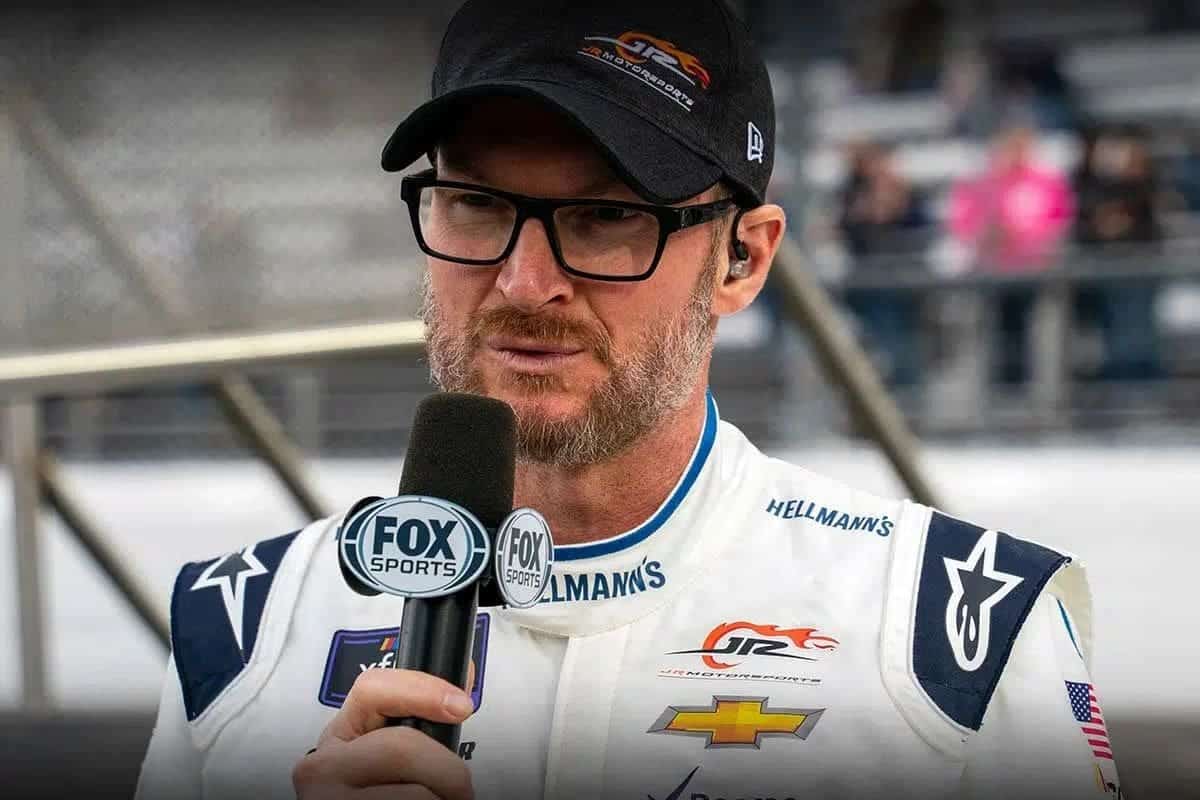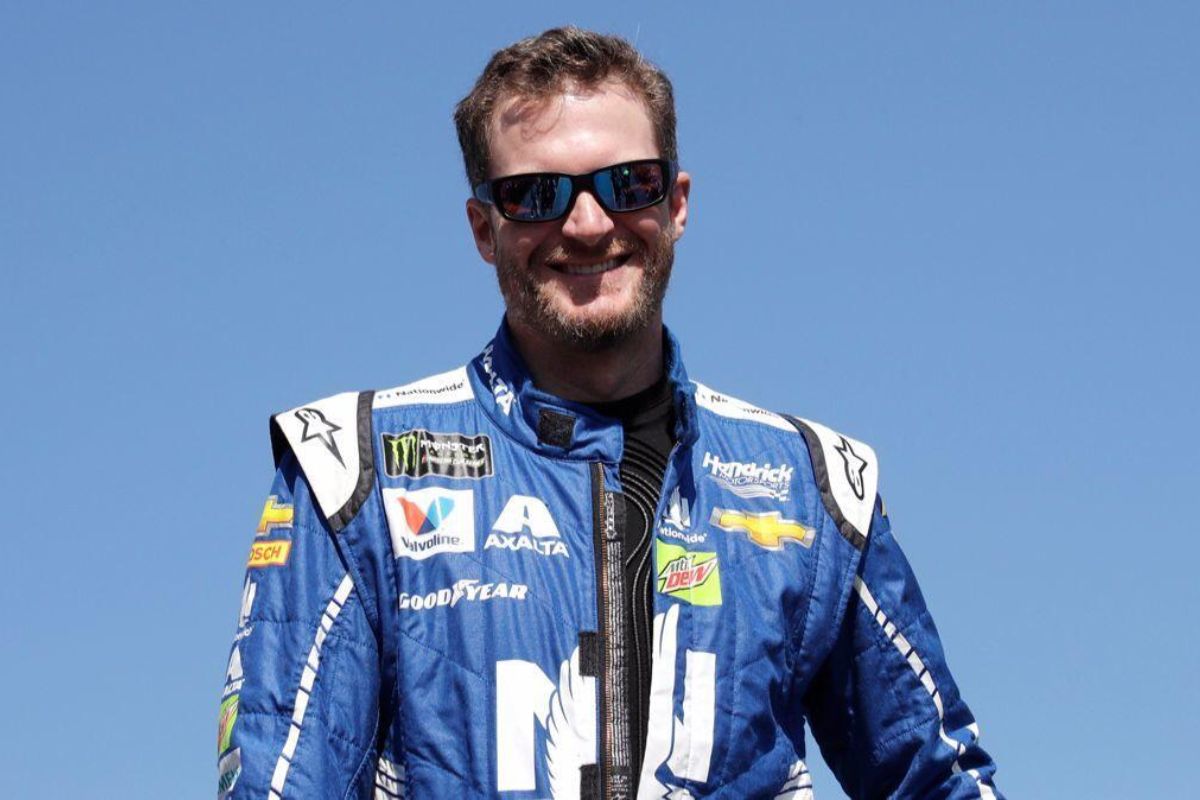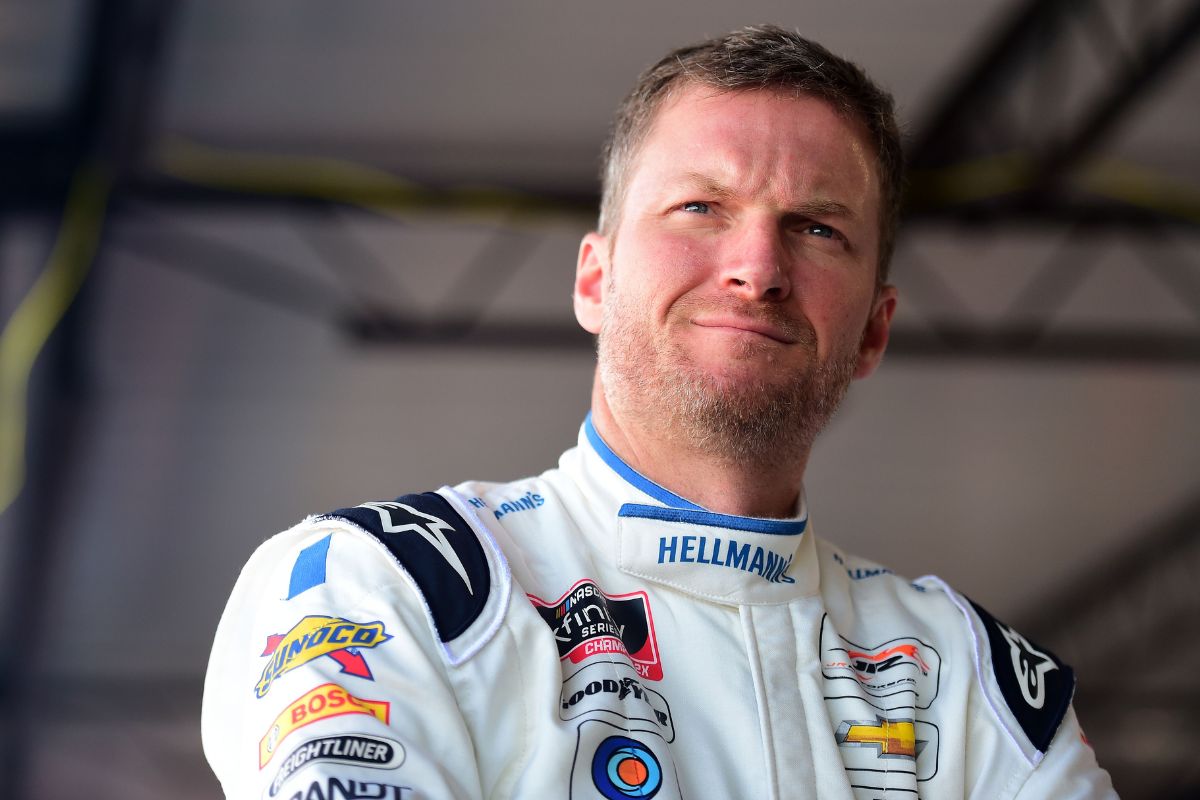Dale Jr. Critiques Chase Elliott: Dale Earnhardt Jr.’s recent critique of Chase Elliott‘s performance compared with his continued endorsement of Jimmie Johnson offers a compelling narrative rooted in analytical depth and experiential insight. Earnhardt Jr. pinpoints specific areas for Elliott’s improvement, suggesting that the young driver has yet to fully highlight his potential. In contrast, his steadfast support for Johnson highlights the veteran’s tactical expertise and seasoned knowledge.
Key Highlights
- Dale Earnhardt Jr. criticized Chase Elliott’s recent racing performance, highlighting areas needing improvement.
- Dale Jr. emphasized Jimmie Johnson’s consistent and commendable racing skills in his analysis.
- Dale Jr. provided insights comparing the performances of Chase Elliott and Jimmie Johnson.
- Dale Jr. expressed support for Jimmie Johnson’s approach and strategy in races.
- Dale Jr. believes Chase Elliott could benefit from adopting some of Jimmie Johnson’s racing techniques.
Initial Debate on Practice Time
The initial debate on practice time gained traction last month when Brad Keselowski’s assertion that drivers need more practice sessions was supported by seasoned veterans Jimmie Johnson and Dale Earnhardt Jr., contrasting with Chase Elliott’s stance that the current practice time suffices. This divergence in opinion highlights a critical discussion within the motorsports community regarding the best balance between practice and race preparedness.
Keselowski’s perspective is rooted in the belief that additional practice not only improves driver performance but also contributes to the safety and competitiveness of races. His viewpoint is that more on-track time allows drivers to fine-tune their vehicles and adapt to varying track conditions, ultimately leading to a higher quality of racing.
Jimmie Johnson and Dale Earnhardt Jr. echoed Keselowski’s sentiments, drawing from their extensive experience in the sport. They argue that the intricacies of each track require a level of familiarity that can only be achieved through ample practice. For these veterans, the current practice allocation appears insufficient to meet the rigorous demands of high-stakes racing. Their support for more practice sessions is indicative of a broader concern for maintaining the integrity and excitement of the sport.
Conversely, Chase Elliott’s stance demands for the efficiency and effectiveness of the existing practice schedule. He posits that the current structure is adequate for drivers to adapt to tracks and conditions, and that additional practice might not yield significant performance improvements. Elliott’s perspective reflects a younger generation’s adaptability to modern racing conditions, emphasizing the evolution of driver preparation techniques and technologies.
Shift in Dale Earnhardt Jr’s Perspective
Before the Dover race, Jimmie Johnson and Brad Keselowski shared their thoughts with Jeff Gluck. Johnson recommended increasing practice time from 20 minutes to 45 minutes, thinking it would help drivers better adjust their cars.
Despite previously aligning with Brad Keselowski and Jimmie Johnson in demanding for increased practice sessions, Dale Earnhardt Jr’s stance has recently wavered, prompting a reassessment of his views on the sufficiency of current practice schedules. This shift highlights the intricate dynamics within the NASCAR community regarding preparation and performance.
Initially, Earnhardt Jr was a strong supporter of more practice time, arguing that it was crucial for drivers to fine-tune their vehicles and improve race-day strategies. However, his recent comments reveal a noticeable change, suggesting that perhaps the current practice schedules might be adequate. This enigmatic reversal aroused the curiosity of fans and analysts, prompting a deeper look into the factors influencing his evolving perspective.
Earnhardt Jr’s recent comments highlight a detailed understanding of the intricate balance between practice and race-day performance. He acknowledged that while additional practice can be advantageous, it may not always translate to better outcomes on the track.
Dale Earnhardt Jr’s Revised View on Practice
Earnhardt Jr.’s recent reflections on practice schedules reveal a subtle shift, integrating both his role as a fan and his deep understanding of driver needs. During a recent episode of ‘The Dale Jr. Download,’ Earnhardt Jr. revisited the ongoing debate about the necessity of practice sessions, offering a distinct perspective that diverges slightly from contemporary drivers like Chase Elliott. He had a different view. Even though he is part of the strong Hendrick Motorsports team, known for adapting quickly, he didn’t believe extending practice time was necessary.
“I think we have enough practice. I certainly can understand their perspective on guys either running a part-time schedule or people that are running maybe full-time in Xfinity. But when I look at the whole argument, I look at short tracks across the country. There are dirt track races every Friday and Saturday night, and they get literally five laps of hot laps, and then they run the race.” – (Elliott)
While Elliott contends that additional practice sessions are superfluous from a driver’s standpoint, Earnhardt Jr. presents a compelling case for their importance, both from a fan engagement perspective and for the holistic preparation of drivers.
“We had this conversation with Chase Elliot and he’s like, ah, from my perspective as a driver, we don’t need more practice. My opinion is we do need more practice now. […] It’s more for me as a fan at home, if I’m watching practice on TV on a Saturday or a Friday, I get more excited about the race the next day. I’m more likely to watch it or practice might remind me that I need to watch the race.” – (dale jr.)
In his commentary, Earnhardt Jr. articulates that as a fan, watching practice sessions heightens his anticipation for the upcoming race. He notes, ‘We had this conversation with Chase Elliott and he’s like, ah, from my perspective as a driver, we don’t need more practice. My opinion is we do need more practice now.’ This statement highlights a dual role that Earnhardt Jr. occupies—balancing the technical rigor required by drivers and the entertainment value sought by fans.
Practice as a Tool for Fan Engagement
Dale Jr.’s assertion that practice sessions can serve as a reminder for fans to tune into the race indicates a broader strategic consideration for maintaining fan interest and viewership. According to Dale Jr., practice is like window shopping. It shows off the sport and helps create interesting stories.
“I’m just saying, I believe that practice on television, you know, a good 45 to 45 minutes to an hour dedicated every single week for every series would benefit our viewership on race day. It would benefit fan engagement across the board, whether it’s in person or on TV or you know, people tuning in.” – (dale jr.)
Utilizing practice sessions as a strategic mechanism, NASCAR can greatly increase fan engagement by offering a behind-the-scenes peek into the preparation and intricacies of the sport. Dale Earnhardt Jr. aptly compares practice sessions to window shopping, highlighting their potential to display the sport and develop compelling storylines. By extending practice times, such as adding 30-45 minutes as suggested for the All-Star race at North Wilkesboro, NASCAR can provide fans with a richer, more immersive experience.
Practice sessions serve as an invaluable platform for fans to connect with their favorite drivers and teams on a personal level. Observing the meticulous preparation, the adjustments made to the cars, and the strategic decisions taken by the teams can deepen fans’ appreciation of the complexities involved in the sport. This behind-the-scenes access transforms passive spectators into active participants, fostering a more engaged and loyal fanbase.
Extending practice sessions not only enriches the fan experience but also provides valuable content for media coverage, increasing the sport’s visibility. Moreover, these extended sessions can include interactive segments, such as Q&As and meet-and-greet opportunities, further bridging the gap between fans and the sport. By leveraging practice as a tool for engagement, NASCAR can cultivate a more informed and passionate fanbase, ultimately driving the sport’s growth and popularity.
Dale Earnhardt Jr.’s Reaction to NWB All-Star Race
While extended practice sessions can greatly enhance fan engagement, Dale Earnhardt Jr.’s reaction to the North Wilkesboro All-Star race reveals complexity in evaluating the overall excitement of the event. Despite his instrumental role, alongside SMI CEO Marcus Smith, in revitalizing the North Wilkesboro Speedway for the initial time since 1996, Earnhardt Jr. found the race lacking in thrills. His detailed perspective opens a broader conversation on what makes a race truly enthralling beyond the initial nostalgia and historical significance.
“Fun race to watch. Had its moments. Definitely wanted more of a battle up front. BUT! This @NWBSpeedway track is awesome with the repave. Need a full field of cars on it to stifle the leader with lap traffic. Maybe one day it’ll get that points race.” – (dale jr.)
- Pacing and Dynamics: The race’s flow and strategic developments did not meet the high expectations set by its historical buildup. The event lacked the dynamic shifts and overtaking actions that typically characterize exciting NASCAR races.
- Driver Engagement: Despite the storied track, drivers seemed to struggle with maintaining competitive intensity throughout the race. This may have contributed to a less engaging spectacle for both in-person and television audiences.
- Fan Interaction: Earnhardt Jr. has always emphasized the importance of fan experience. The race, while nostalgic, perhaps did not fully utilize opportunities for fan interaction and engagement during the event.
- Unexpected Drama: Ironically, the most memorable moment was a post-race altercation between Kyle Busch and Ricky Stenhouse Jr., which highlighted the race’s need for on-track drama to match its off-track fireworks.
News in Brief: Dale Jr. Critiques Chase Elliott
Dale Earnhardt Jr.’s critique of Chase Elliott contrasted with his steadfast support for Jimmie Johnson sheds light on the intricate dynamics of NASCAR performance analysis.
Through a detailed examination of practice time and its impact on driver performance, Earnhardt Jr. emphasizes the significance of experience and skill in achieving racing success.
This comparative analysis not only highlights the areas for potential growth in Elliott’s career but also reinforces Johnson’s established expertise, providing valuable insights for NASCAR enthusiasts and analysts.
ALSO READ: Dale Earnhardt Jr. Joins TNT Sports as a NASCAR Commentator




